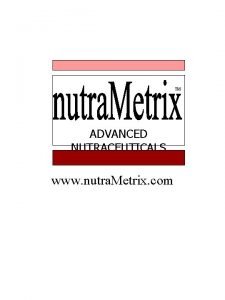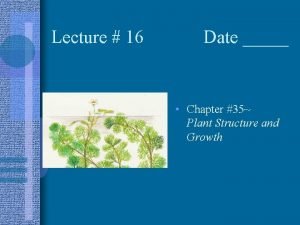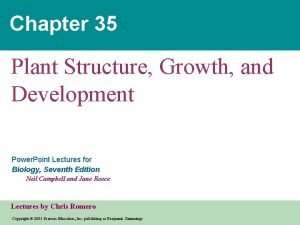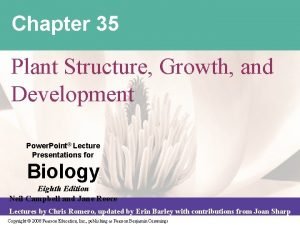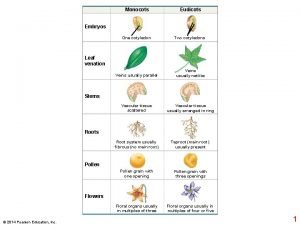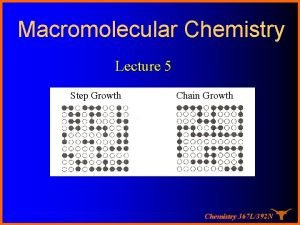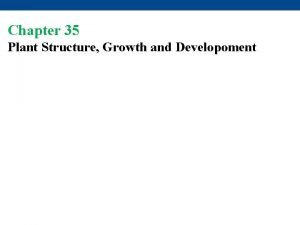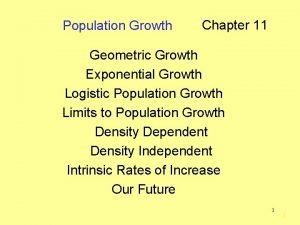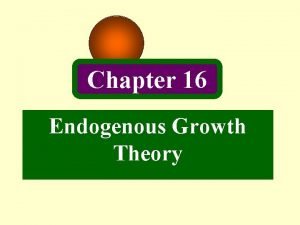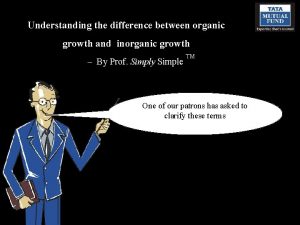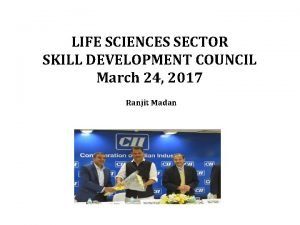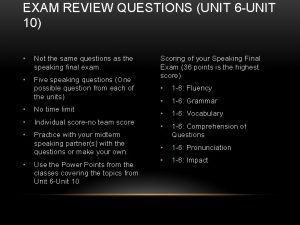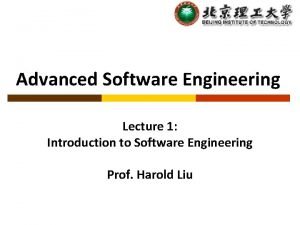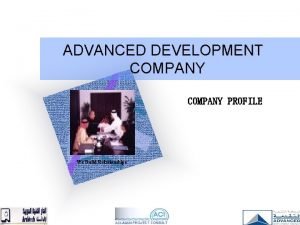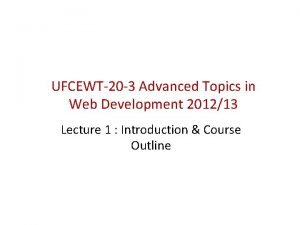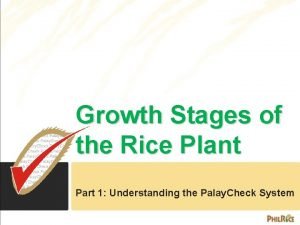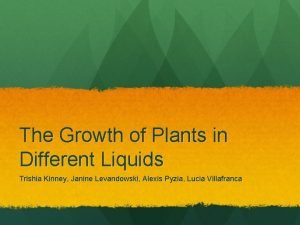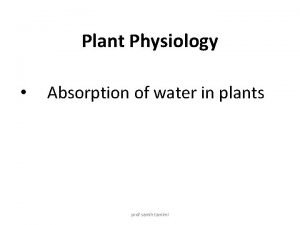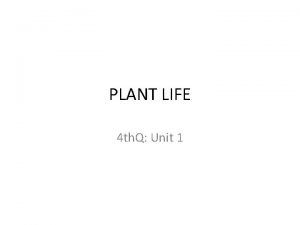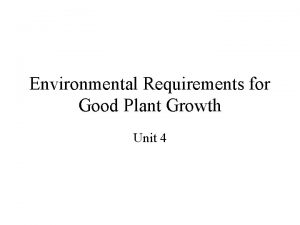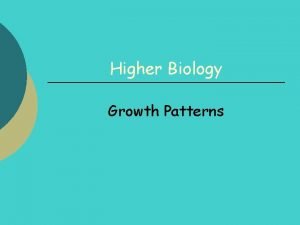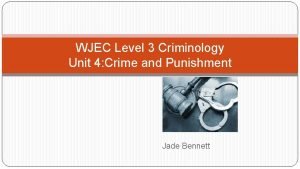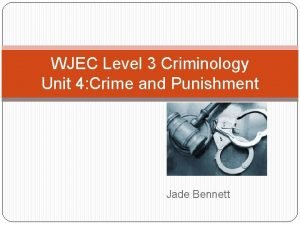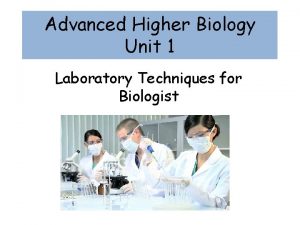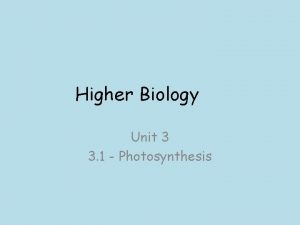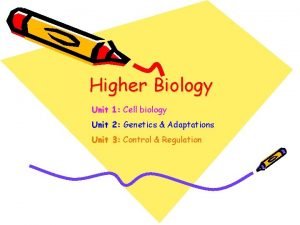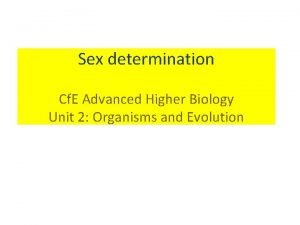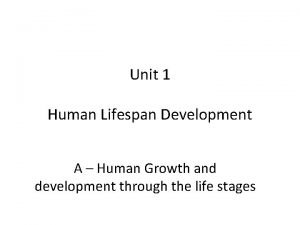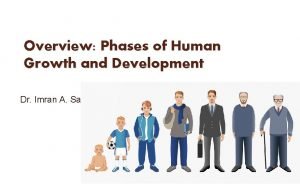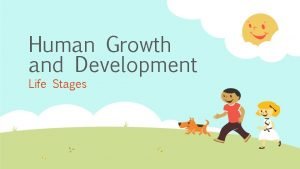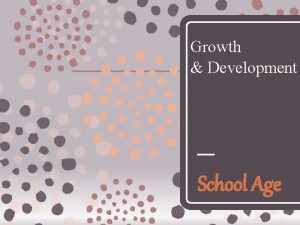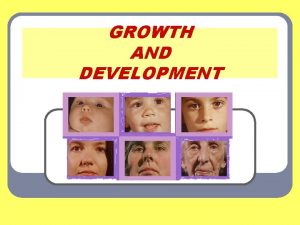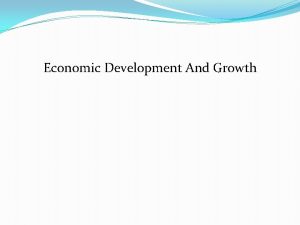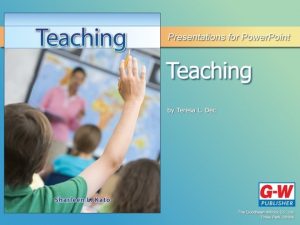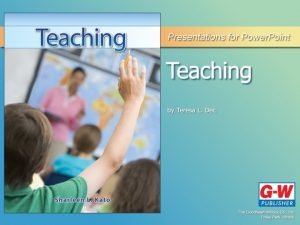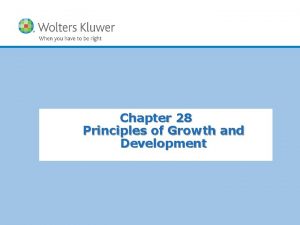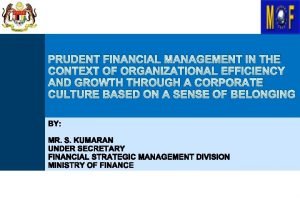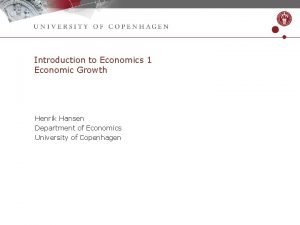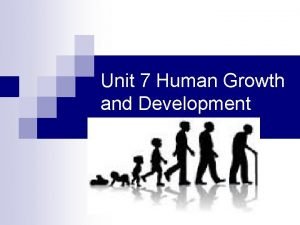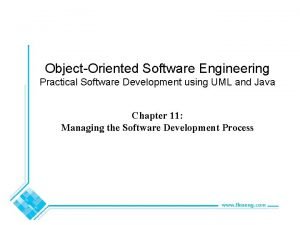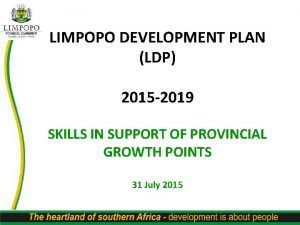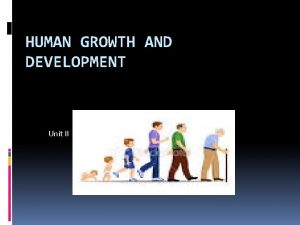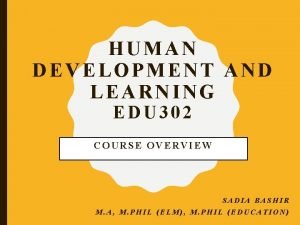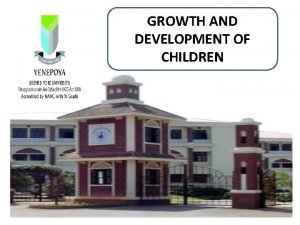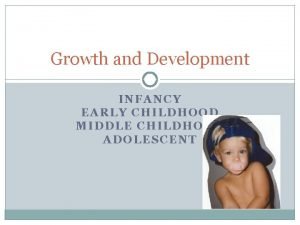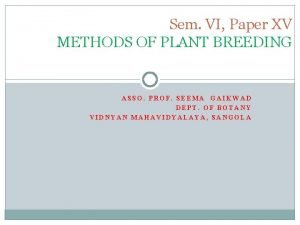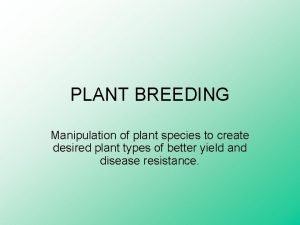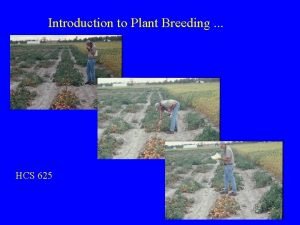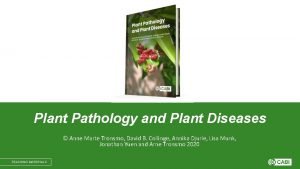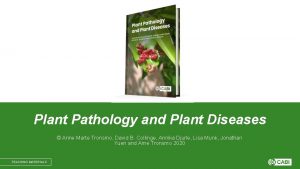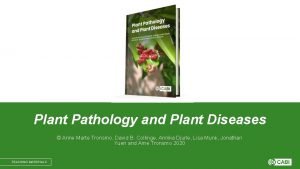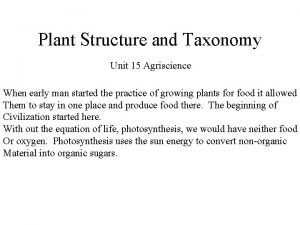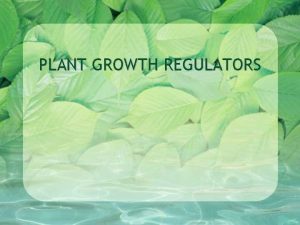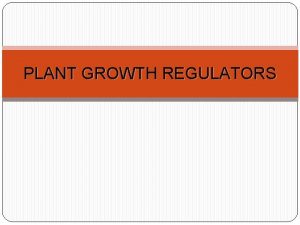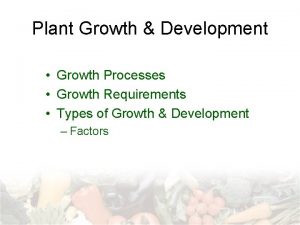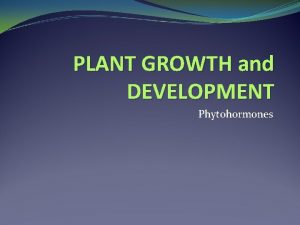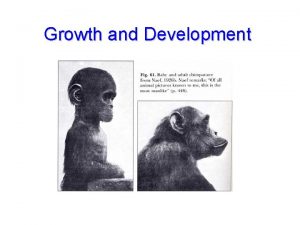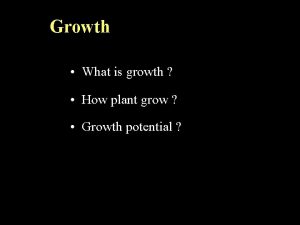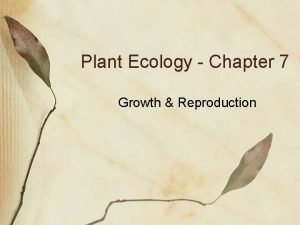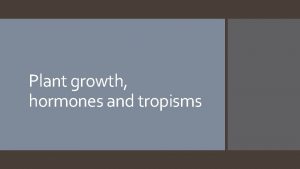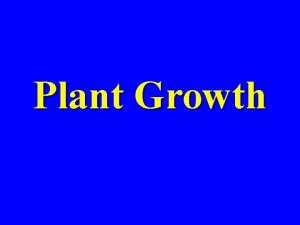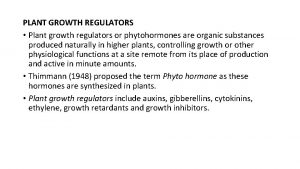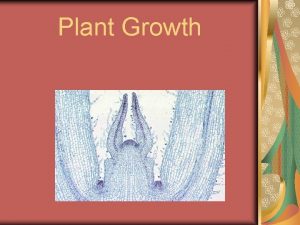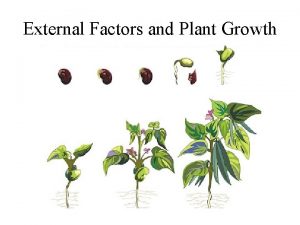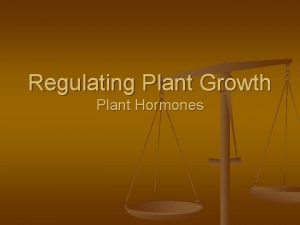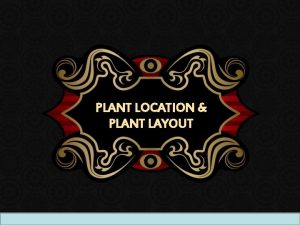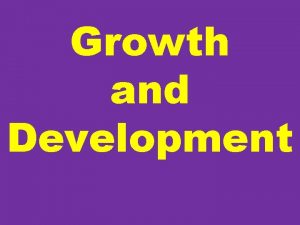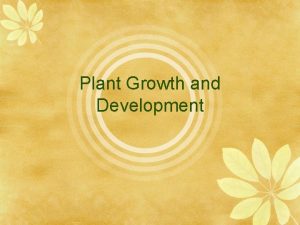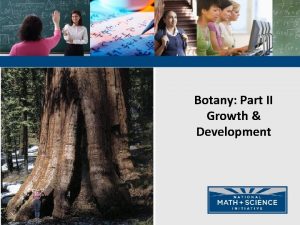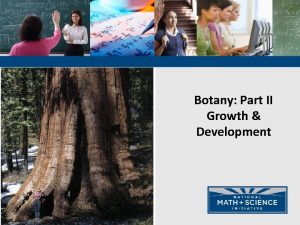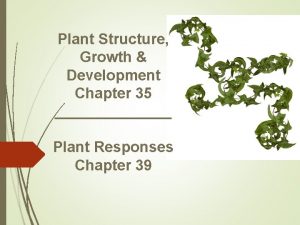Unit Plant Growth Development Advanced Plant Sciences Mr



















































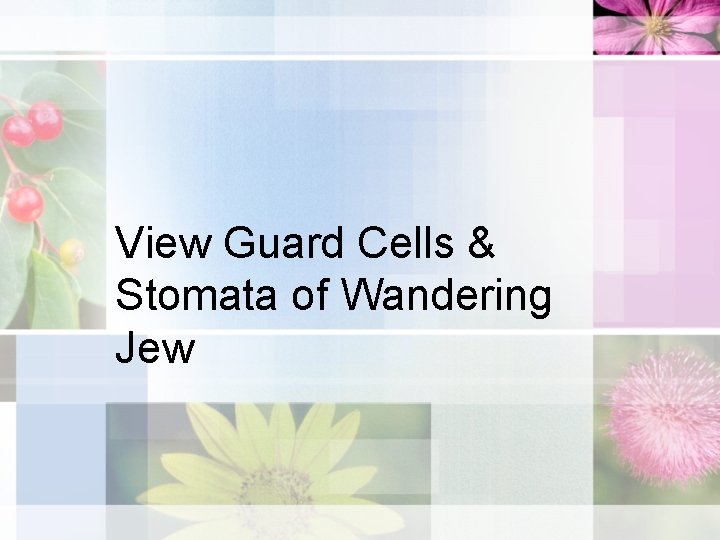
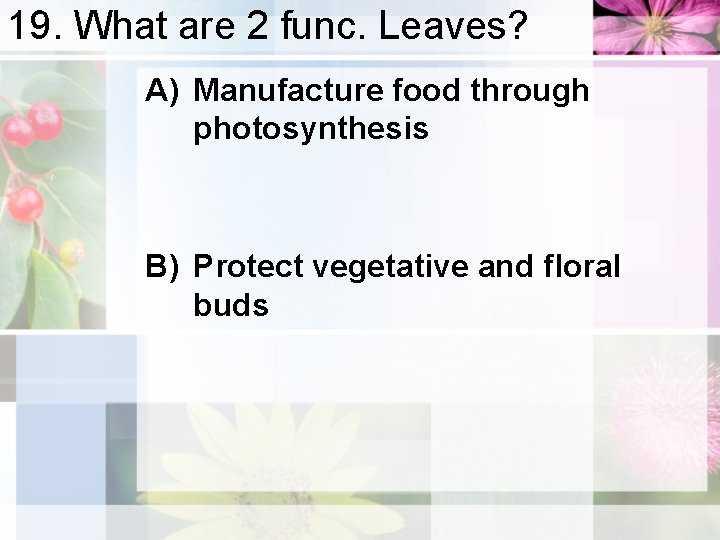
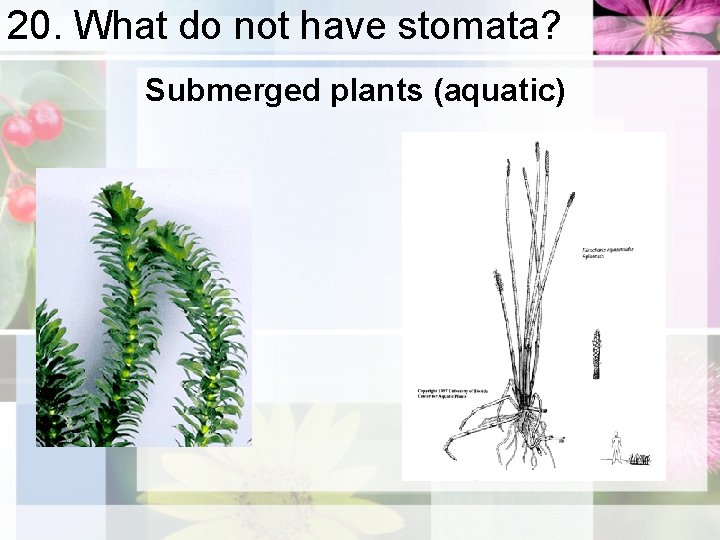
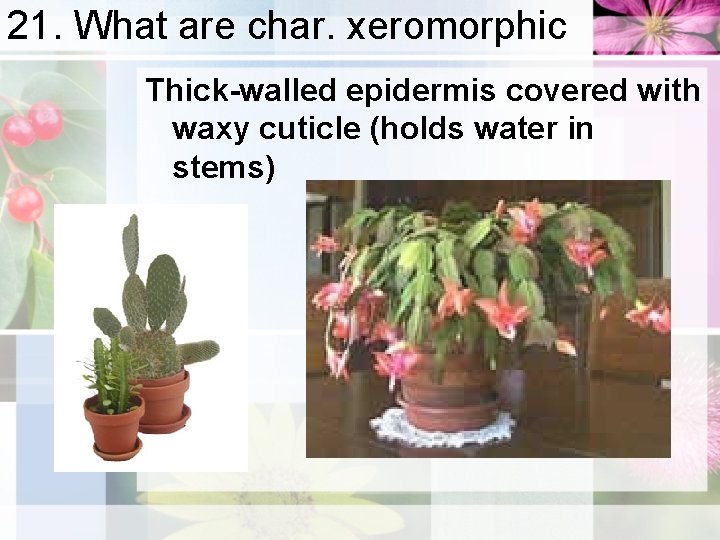
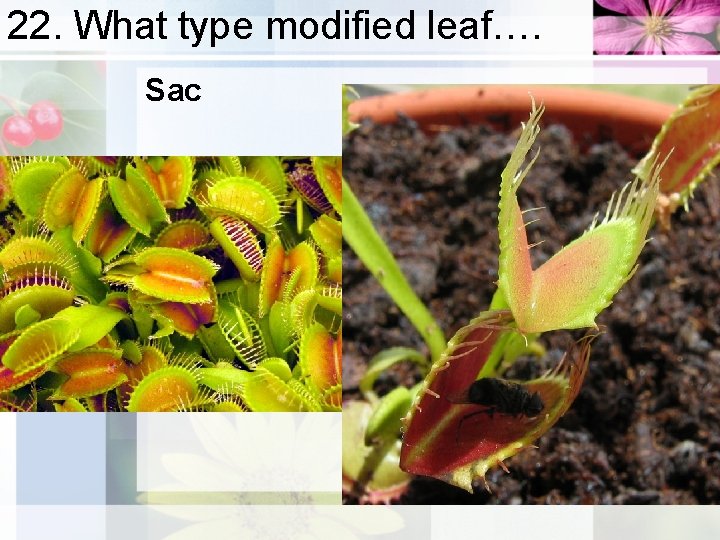
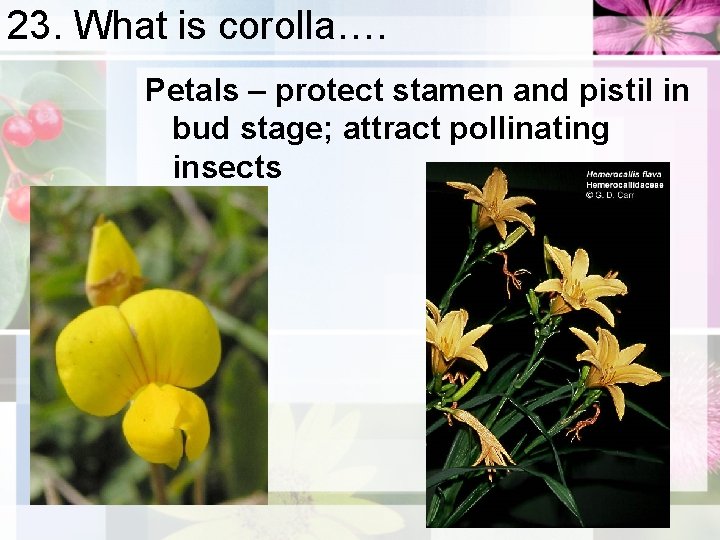
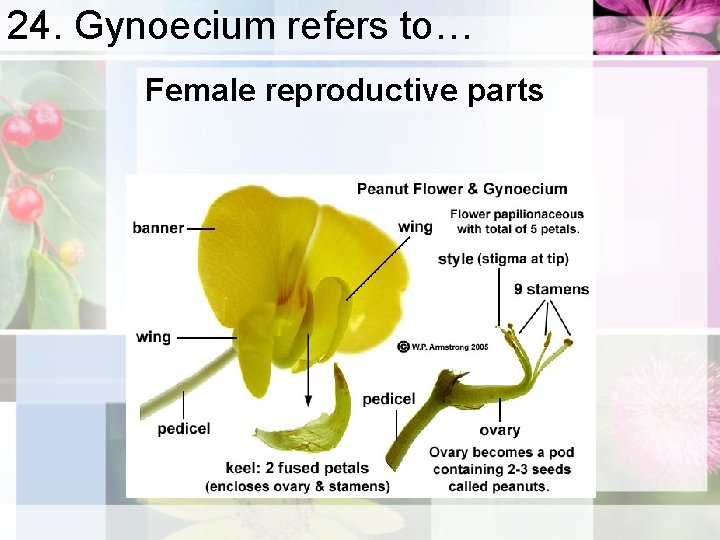
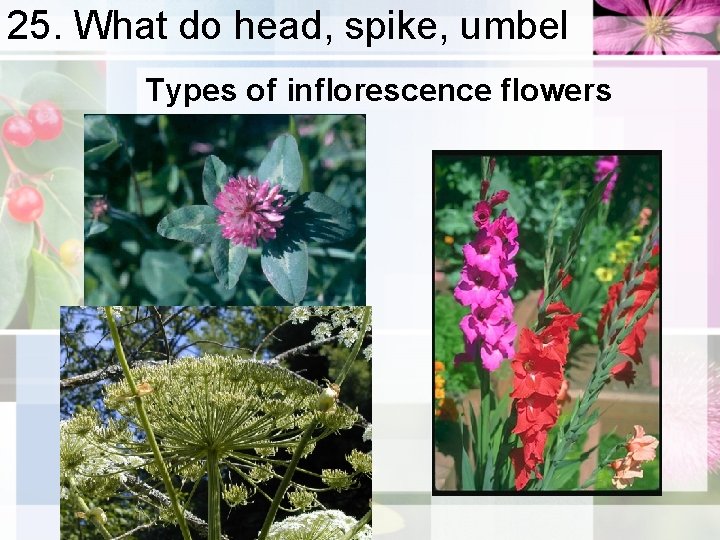
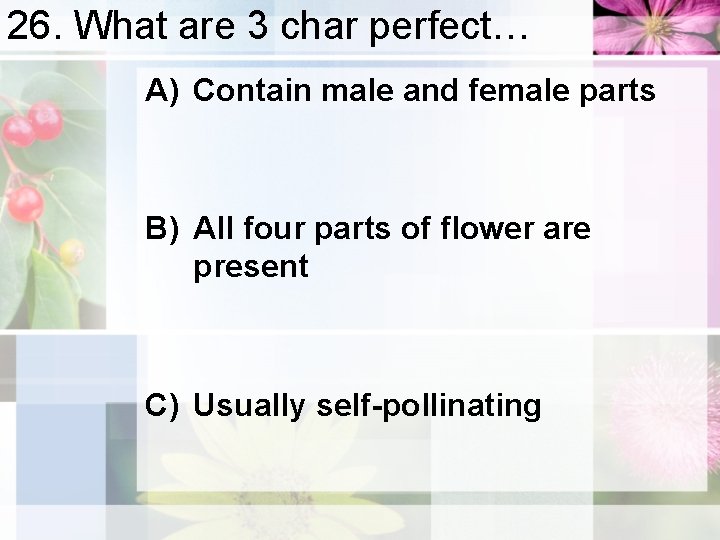
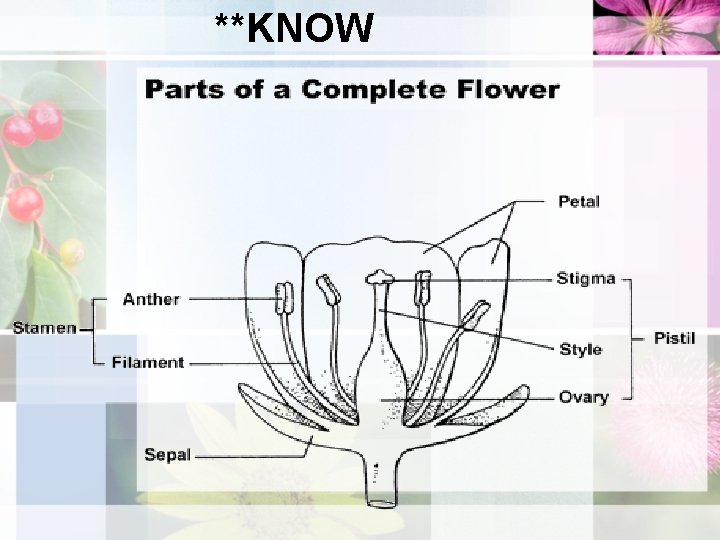
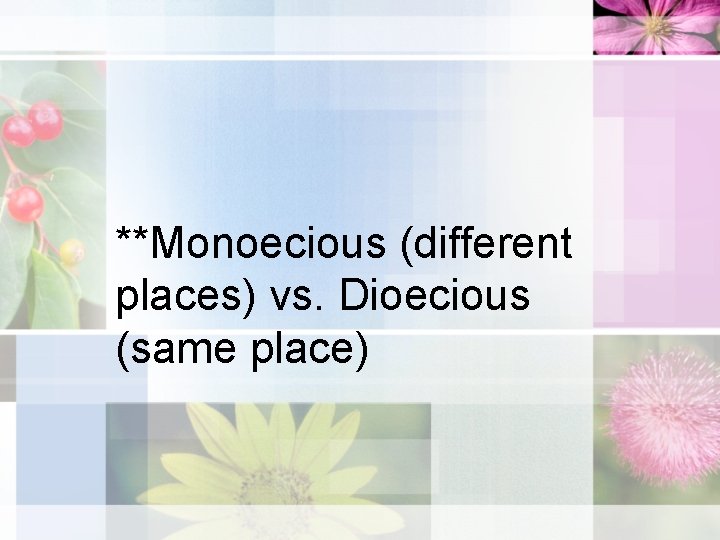
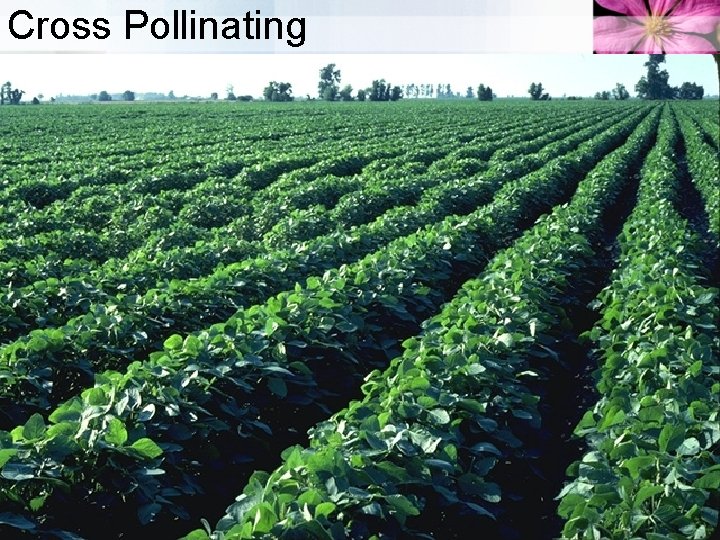
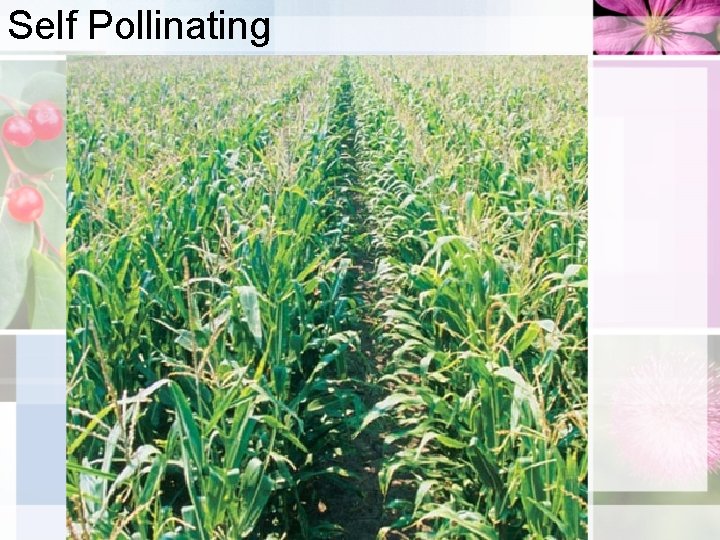
- Slides: 64

Unit: Plant Growth & Development Advanced Plant Sciences Mr. Dieckhoff

1. ID the parts of a plant cell… A. Chloroplast – holds chlorophyll B. Plasma Membrane – Controls entrance & exits C. Cell Wall – 3 layers D. Cytoplasm – Liquid in cell E. Vacuole – Store water F. Mitochondrion – Respiration G. Nucleus - Genetics

**Four elements of the cell structure: A. B. C. D. Cell wall Plasma membrane Cytoplasma Nucleus

Cell Wall Structure




Too little water in vacuole…. .


Tobacco flower losing pigment because lack of mitochondria proteins


2. What are 2 function of PM? a) Control entrance & exit into and out of cell b) Relays environmental information about condition

3. What are 3 organelles…… 1) Mitochondria – Control Chemical Reactions, site of respiration 2) Plastids – Contain Chloroplasts; contain chromoplasts (red, yellow, brown pigments) 3) Vacuoles – store water, dissolve minerals

4. What are 3 func. of nucleus. . A. Control Physiological Characteristics B. Control Appearance of Plant C. Passes Characteristics to Offspring

5. What are 2 types tissue…. 1) Meristem 2) Permanent

6. What are differences…… Meristem actively divides to form new growth where permanent does not actively divide

7. What are 3 types meristems. . 1) Apical – plant length 2) Cambium – plant diameter 3) Intercalary Zone – stem height



**Cambium Meristem View Video

Intercalary Zone Meristem

8. What two types permanent… 1) Epidermis – outside covering 2) Vascular System – transportation system of plant a) Xylem - Up b) Phloem - Down


• • **Five basic parts of a plant: A. Seeds B. Roots C. Stems D. Leaves E. Flowers

9. What are three parts mono… 1) Seed Coat – Protect embryo 2) Embryo – Miniature plant 3) Endosperm - Nourishment

10. **Which is found only mono…Endosperm

11. What are 4 parts embryo? 1) Cotyledon 2) Epicotyl 3) Hypocotyl 4) Radicle

12. **What another term seed leaf Cotyledon


13. What type of Plant…. A) Has one leaf – Monocot B) Has two leaves - Dicot


**Stems….

Stolon

**Crown Thick, compressed stem whose leaves and flower buds grow just above ground Example in CCC Greenhouse: fern

Rhizome

14. **What are 3 func. Roots…. A) Synthesize hormones for plant growth B) Store carbohydrates C) Provide aerial support D) Anchor plant E) Absorb Water and Nutrients


Application of Rooting Hormone

Don’t cut alfalfa in October

Wait Until November

Or Next Year will Look Like….

15. What are 5 types roots…. A) Taproot B) Fibrous C) Aerial D) Adventitious E) Aquatic


Adventitious Roots

Tap Root

Aerial Roots

Aquatic Roots

16. What is pith? Parenchyma cells

17. What is hyposophylls? Floral bracts – protect buds during development Dogwood

18. ID interior parts of leaf…. A) B) C) D) E) F) G) H) I) J) View Video Phloem Xylem Cuticle Upper epidermis Chloroplast Lower epidermis Cuticle Stomata Guard Cell Spongy mesophyll K) Palisade mesophyll

**The 3 structures of a leaf: A. Epidermis B. Mesophyll layer C. Vascular bundles

View Guard Cells & Stomata of Wandering Jew

19. What are 2 func. Leaves? A) Manufacture food through photosynthesis B) Protect vegetative and floral buds

20. What do not have stomata? Submerged plants (aquatic)

21. What are char. xeromorphic Thick-walled epidermis covered with waxy cuticle (holds water in stems)

22. What type modified leaf…. Sac

23. What is corolla…. Petals – protect stamen and pistil in bud stage; attract pollinating insects

24. Gynoecium refers to… Female reproductive parts

25. What do head, spike, umbel Types of inflorescence flowers

26. What are 3 char perfect… A) Contain male and female parts B) All four parts of flower are present C) Usually self-pollinating

**KNOW

**Monoecious (different places) vs. Dioecious (same place)

Cross Pollinating

Self Pollinating
 Human sciences tok definition
Human sciences tok definition Nutraceutical consultant
Nutraceutical consultant Enumerate the rice plant growth and development stages
Enumerate the rice plant growth and development stages Functions of ethylene
Functions of ethylene Chapter 35 plant structure growth and development
Chapter 35 plant structure growth and development Apical meristem
Apical meristem Primary growth and secondary growth in plants
Primary growth and secondary growth in plants Growth is defined as an increase in
Growth is defined as an increase in Monocots vs eudicots
Monocots vs eudicots Growthchain
Growthchain Primary growth and secondary growth in plants
Primary growth and secondary growth in plants Geometric growth vs exponential growth
Geometric growth vs exponential growth Neoclassical growth theory vs. endogenous growth theory
Neoclassical growth theory vs. endogenous growth theory Organic vs inorganic growth
Organic vs inorganic growth Lsssdc
Lsssdc Unit 6 review questions
Unit 6 review questions Advanced software development
Advanced software development Advanced development group
Advanced development group Advanced topics in web development
Advanced topics in web development Stages of rice plant
Stages of rice plant Plant growth with different liquids
Plant growth with different liquids Significance of transpiration
Significance of transpiration Role of transpiration
Role of transpiration Environmental requirements for good plant growth
Environmental requirements for good plant growth What is growth in biology
What is growth in biology External forms of social control criminology
External forms of social control criminology Criminology unit 4 revision
Criminology unit 4 revision Advanced higher biology unit 1
Advanced higher biology unit 1 Advanced higher biology unit 3 questions
Advanced higher biology unit 3 questions Higher biology unit 2 past paper questions
Higher biology unit 2 past paper questions Advanced higher biology unit 2
Advanced higher biology unit 2 Social changes in adulthood
Social changes in adulthood Theories about
Theories about Human growth and development
Human growth and development Stages of human growth and development pictures
Stages of human growth and development pictures Pretest growth development and sexuality
Pretest growth development and sexuality Sahar anwar
Sahar anwar The stage of growth
The stage of growth 6 life stages
6 life stages Economic growth vs economic development
Economic growth vs economic development Economic development vs economic growth
Economic development vs economic growth Reflection about 7 domains of ppst
Reflection about 7 domains of ppst Growth and development pictures
Growth and development pictures Middle childhood growth and development
Middle childhood growth and development Distinguish between growth and development
Distinguish between growth and development Summer camp 2014
Summer camp 2014 Principles of growth and development
Principles of growth and development Prudent financial management practices
Prudent financial management practices Economic growth and development
Economic growth and development Growth and development
Growth and development Site:slidetodoc.com
Site:slidetodoc.com Principle of growth and development
Principle of growth and development Limpopo development plan
Limpopo development plan Four main types of growth and development
Four main types of growth and development Difference between growth and development
Difference between growth and development Principle of growth and development
Principle of growth and development Middle and late childhood
Middle and late childhood Infancy psychosocial development
Infancy psychosocial development Sem vi
Sem vi Plant breeding for disease resistance
Plant breeding for disease resistance Plant introduction in plant breeding
Plant introduction in plant breeding Tronsmo plant pathology and plant diseases download
Tronsmo plant pathology and plant diseases download Tronsmo plant pathology and plant diseases download
Tronsmo plant pathology and plant diseases download Albugo eye
Albugo eye Unit 15 plant structures and taxonomy
Unit 15 plant structures and taxonomy

